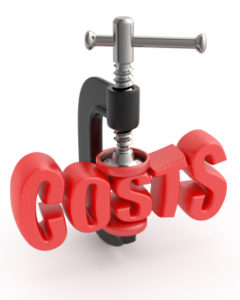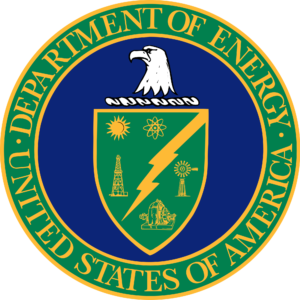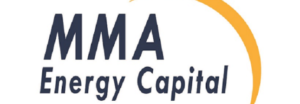Solar’s Future May Not Be Pre-Ordained

For virtually everyone who cares about climate change, the election of Donald Trump precipitates an unprecedented crisis. The Paris climate agreement, an extraordinary commitment to global cooperation by more than 200 countries to dramatically curb carbon emissions, is now in grave danger. The Clean Power Plan is almost certainly dead. Our domestic politics are failing us, the world, and future generations yet unborn. There has been much commentary in the last week that despite the shift in political winds, that solar remains a bright spot (see: “Trump Can’t Stop the Energy Revolution” and “Trump Can’t Stop The Clean Economy”). … Read More
This is your SolarWakeup for November 17th, 2016
Next Secretary of Energy? We’ve got your list. The list of people that President-Elect Trump should consider for DOE. This isn’t a political assessment it is an assessment for the type of person that can be successful within the administration and inspire private sector innovation. Let’s remember, the energy sector is an enormous wealth creation market with a trillion dollar opportunity. Follow the money, open the markets and the private sector will thrive on economics and value to the consumer.
Distributed rate design. NARUC finalized its DER guide for rate design at their annual meeting. Both SEIA and Vote Solar came out with positive outlook for the report which amongst other things outlines that 19 States have published reports saying that there does not appear to be a cost shift for distributed solar.
Series 6 focus. First Solar formally announced that it was scrapping Series 4 manufacturing expansion and planned Series 5 roll out in favor of going straight to Series 6. The reason is simple, it brings First Solar’s modules in line or ahead of crystalline in terms of efficiency. The company is going to reduce its workforce by 27% (1,600 people) and write down between $500-$700million. I don’t see this as bad news, this is a focus on cost reduction and creating margins on a value proposition. More solar companies should focus on that, especially the $150million in profits last quarter.
Let the market work. You are going to hear a lot about letting markets work from this outlet. When we talk about demand charges, solar fees, or rate design, remember that if the market has the right pricing signals then the consumer will be able to figure out what they need, when they need it and how much they are willing to pay. Illinois is doing it wrong in my opinion, no need for indiscriminate demand charges and handouts for power plants. Fix the valuation for the power market instead.
Larger grids = greater value. EDF makes a point that needs to be talked about more. The electric grid needs to start connecting to neighboring systems. PJM which goes from Illinois to North Carolina and New Jersey which allows for all sorts of fuels to compete in a regulated competitive market.
News
Opinions:
Have a great day!
Yann
7 People President-Elect Trump Should Consider For Secretary of Energy

With Steven Chu and Ernest Moniz as Secretaries, the Department of Energy (DOE) under Obama has done much good work to support advanced energy: the creation of the Advanced Research Projects Agency-Energy (ARPA-E), major investment in smart grid under the stimulus package, the SunShot initiative, new appliance and fuel efficiency standards, a loan guarantee program that has supported solar, wind, biofuels, nuclear, battery storage, and advanced vehicles, and more. Though the Obama Administration exhibited a favoritism towards renewable technologies, it still embraced an “all-of-the-above” energy strategy. In fact, EIA data shows that natural gas production is up over 25% and … Read More
News Roundtable: Presidential Election 2016 and What Will Trump Do? (Podcast)

The marathon Presidential election is over and Donald Trump is the next President. Join the podcast as Yann Brandt and Frank Andorka try to make some sense of what the election means to solar and how the industry did on the State level votes. Coverage includes what Trump’s moves could be on energy and votes in Arizona, Nevada and Florida. This is part 2 of 2.
This is your SolarWakeup for November 16th, 2016
Make sure you visit back later in the day, we have been hard at work for a week to write an important article. “7 people that President-Elect Trump should consider for Secretary of Energy” which we will be releasing sometime today.
More money, no problems. We have some news for you this morning about $500 million that went to a solar lender the morning after the Trump election. In all, almost a billion dollars went to developers and lenders this week in just two transactions. Let’s highlight the good news instead of just the trumped up pessimism we are currently surrounded by.
The constituency of 209k. A friend of SolarWakeup’s and the all around good guy got a nice write-up from The Hill yesterday. Scott Hennessey has been a solar lobbyist for a decade, starting as one of the first employees at SEIA before moving to SolarCity. Definitely worth the read.
Solar is good for all. A Boston University professor did some solar analysis in Massachusetts on an hour by hour basis. The results were interesting mostly in the wording. In the report, solar customers were found to provide value to non-solar customers while also benefitting from the infrastructure for those kWh that weren’t purchased. The balance is created using a simple but ‘wrong’ incentive structure.
Illinois shenanigans. This is a quick moving story because Illinois is in a special session, one apparently famous for pushing legislation through without much debate. The long story, in short, is that demand charges are in an SB amendment buried deep in a couple hundred pages. We will have more coverage on this but get ready to activate in Illinois, grassroots will make or break this.
Crane’s thoughts on Trump. David Crane, as an editor at large for GreenBiz, has some advice on giving Trump a chance. There are some caveats to that advice to set the expectations….not too high. The best advice in the column is a recognition that we are fortunate that this is 2016 and not 2012 because solar is in a much better place and leadership can come from the States.
News
Opinions:
Have a great day!
Yann
Investors Keep Faith in Solar Post Trump Election – MMA Raises $500mm

If you measure the impact of the election on investor sentiment, take one look at the $500 million that MMA Energy Capital announced at 8am the morning after election day. On November 9th, MMA announced a new joint venture named “Renewable Energy Lending” with TSSP, a TPG platform. TSSP is a dedicated credit and special situations platform with over $18 billion of assets under management. SolarWakeup spoke with MMA Energy Capital’s Bob Hopper about the transaction and to discuss the current state of renewable energy lending. MMA has been operating the lending platform for just under 2 years and has committed … Read More
This is your SolarWakeup for November 15th, 2016
My two cents. In a new format for our podcast, Frank and I got to digest the elections a bit. Of course we talked about the Federal implications but mostly we talked about the State initiatives in FL, NV and AZ. Florida in particular has an interesting twist. We should never have been there. The ballot question was defensive in the beginning because a group wanted to put a solar amendment on the ballot. Unless you have $20million in the bank, do me a favor and stop talking about a ballot amendment. Part 2 of the podcast out later today.
The new freedom fries? Nicolas Sarkozy, who is making another run for President in France, said that if the USA were to leave the Paris Agreement, Europe should tax US imports to make up for the carbon cost. Until this moment, there was little economic repercussion obvious for leaving the climate deal but here you go. Follow the money, always.
Coal was just a tool. Don’t take it from me, listen to the Senate Majority Leader, Mitch McConnell. Admitting that the vibrant coal sector was lost due to private sector activity, McConnell says we must now focus on helping the communities rebuild in a post-coal economy.
A sunny 2030 goal. Sunshot crushed their 2020 goals well in advance and now it is stepping up to the next level. In line with the manufacturing goals, Sunshot is seeking a 60% drop in utility-scale solar LCOE down to $0.03/kWh. Don’t expect much DOE money to get added to the budget going forward, time for a private Sunshot fund to come out. They’ve done quite well and it’s time it gets replicated.
Environmental consequences. When you get scared about the environmental regulations for the future, drive right past the White House and head to Capitol Hill. The rules that make up the Clean Air and Water Acts, PURPA, ITC and more, it gets done at the Hill. Hope for the best and plan for the worst.
News
Opinions:
Have a great day!
Yann
News Roundtable: Presidential Election 2016 and State Solar Votes (Podcast)
The marathon Presidential election is over and Donald Trump is the next President. Join the podcast as Yann Brandt and Frank Andorka try to make some sense of what the election means to solar and how the industry did on the State level votes. Coverage includes what Trump’s moves could be on energy and votes in Arizona, Nevada and Florida. This is part 1 of 2.
This is your SolarWakeup for November 14th, 2016
A cabinet pick to get behind? The New York Times put together the inside favorites on President Trump’s cabinet picks. In the transition team you have a climate denier in Myron Ebell for the E.P.A. and Mike McKenna for Energy. For Secretary of the DOE you have a familiar name in James Connaughton, the Chairman of the White House Council on Environmental Quality for President Bush from 01-09. Connaughton has also spoken favorably about some form of Cap and Trade. He is definitely not Governor Jennifer Granholm but he has policies that we can work with.
Speculation is the new sport. What will happen under the next administration? What will the government focus on with one party in power in each chamber? Plenty of material to work with but keeping investors comfortable is starting to happen, just look at the comments from Array Technologies.
Jobs, veterans, and jobs for veterans. In 2020 there will be more veterans in the solar industry than in the entire coal sector, it doesn’t matter what the agencies and President do to change that. As we paused for Veteran’s Day on Friday, let’s recall the great work solar is doing to bring great paying jobs for great Americans. Saving the planet is just another employee benefit.
Both sides of the table. Half of a gigawatt was commissioned by NextEra last week sitting on 6 square miles of public lands. As the project was being built, NextEra was also fighting distributed solar in Florida. The point is that motivation is money. Follow the money, always.
Your solar duty! I am reiterating my request for your company to fill out the survey. We can only win political battles if we have the jobs to prove it. Make sure your CEO and HR managers get this done, Today. CLICK HERE FOR THE SURVEY
News
Opinions:
Have a great day!
Yann
These are the top 10 most read solar articles by your peers this week!
News
The Top 10 is ranked by the number of SolarWakeup.com readers that clicked on the news article during the previous week. It is the poll of the most relevant solar news of the week as judged by your colleagues and competitors.
Have a great day!
Yann

